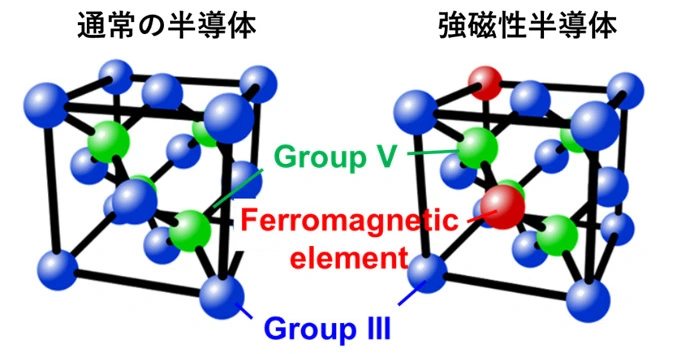2025-05-26 森林総合研究所

図1 セシウム133を用いた樹木と土壌間のセシウム137の吸収量と排出量の釣り合いを評価する手法の概念図
上向き矢印が吸収量、下向き矢印が排出量を示し、青矢印がセシウム133、黄矢印がセシウム137の動きを示しています。
<関連情報>
- https://www.ffpri.affrc.go.jp/press/2025/20250526/index.html
- https://www.sciencedirect.com/science/article/abs/pii/S0265931X25000402
- https://www.sciencedirect.com/science/article/abs/pii/S0265931X25000438
安定セシウムを用いた落葉広葉樹林における放射性セシウム循環平衡の評価: 福島事故後のパイロットスタディ Assessment of radiocesium cycle equilibrium in a deciduous broad-leaved forest using stable cesium: A pilot study after the Fukushima accident
Wataru Sakashita, Takuya Manaka, Ren Tsuneoka, Tadashi Sakata, Naohiro Imamura, Junko Nagakura, Yoshiki Shinomiya
Journal of Environmental Radioactivity Available online: 3 March 2025
DOI:https://doi.org/10.1016/j.jenvrad.2025.107653
Highlights
- Quasi-equilibrium was assessed in the 137Cs cycle of a deciduous broad-leaved forest.
- 137Cs/133Cs ratios were constant in the above-ground component and stemflow.
- These ratios enable us to assess the quasi-equilibrium of the Fukushima forest.
Abstract
To accurately predict long-term 137Cs activity concentrations in stem wood, it is crucial to assess whether the 137Cs cycle in forests has reached quasi-equilibrium between trees and forest soil. A method has been proposed to evaluate this equilibrium based on the concentration ratio of 137Cs to stable cesium (133Cs) within the tree compartments. However, this assessment has not yet been conducted in the recent situation following the Fukushima accident. In this study, we investigated the relationship between the concentration ratios of 137Cs and 133Cs in tree leaves, inner bark, stem wood, and stemflow in a deciduous broad-leaved forest at Kawauchi Village, the Fukushima Prefecture, as of 2022–2023. Our comparisons between 137Cs and 133Cs concentrations revealed that 137Cs/133Cs concentration ratios were constant in the above-ground compartment and stemflow, suggesting that the cycle of 137Cs in the Fukushima forest has reached quasi-equilibrium 11–12 years after the accident. This concentration ratio-based assessment for quasi-equilibrium may be applicable to forest sites where long-term monitoring is not conducted.
準平衡状態にある福島の森林における主な沈着プロセスによる樹冠から林床への放射性セシウム動態 Radiocesium dynamics from canopy to forest floor by main depositional processes in Fukushima forests at quasi-equilibrium state
Wataru Sakashita, Naohiro Imamura, Tamotsu Sato, Tsutomu Yagihashi, Ren Tsuneoka, Tadashi Sakata, Yoshimi Ohmae, Satoru Miura, Yoshiki Shinomiya
Journal of Environmental Radioactivity Available online: 8 March 2025
DOI:https://doi.org/10.1016/j.jenvrad.2025.107656
Highlights
- We observed 137Cs flux from canopy to forest floor in Fukushima from 2020 to 2023.
- The annual 137Cs flux ranged from 0.4% to 1.6% of the initial deposition.
- Litterfall was the primary transfer pathway among the depositional processes.
- Contribution of each process to the total flux varied depending on tree species.
Abstract
Accurate measurement of the amounts of radiocesium (137Cs) that transfer from the canopy to the forest floor at the recent quasi-equilibrium state is crucial for improving the accuracy of long-term predictions of 137Cs distribution in forests. This study is the first to detail the 137Cs flux via throughfall, stemflow, and litterfall processes in two Japanese cedar forests (KU1-S and KU2-S) and one deciduous broad-leaved forest (KU1-Q) in the Fukushima Prefecture during the quasi-equilibrium state. From 2020 to 2023, the annual transfer of 137Cs from the canopy to the forest floor, relative to the initial deposition, varied among the study plots but never exceeded 2% (0.433–0.564% in KU1-S, 1.06–1.62% in KU2-S, and 0.421–0.461% in KU1-Q). Since the transfer of 137Cs from trees to soil is balanced with the transfer from soil to trees at the quasi-equilibrium state, these percentages can be interpreted as the root uptake of 137Cs from the soil, which is difficult to observe directly. Analysis of the contributions of litterfall, throughfall, and stemflow to the total transfer of 137Cs revealed that litterfall accounted for more than 50% in both Japanese cedar and deciduous broad-leaved forests. We also found that the proportion of 137Cs flux via litterfall was higher in Japanese cedar forests compared to the deciduous broad-leaved forest (KU1-S:91–92%; KU2-S:74–77%; KU1-Q:57–60%). These findings regarding the 137Cs fluxes at the quasi-equilibrium state will enhance our understanding of the future dynamics of 137Cs within forest ecosystems and improve the accuracy of long-term predictions of 137Cs activity concentration in forests.



